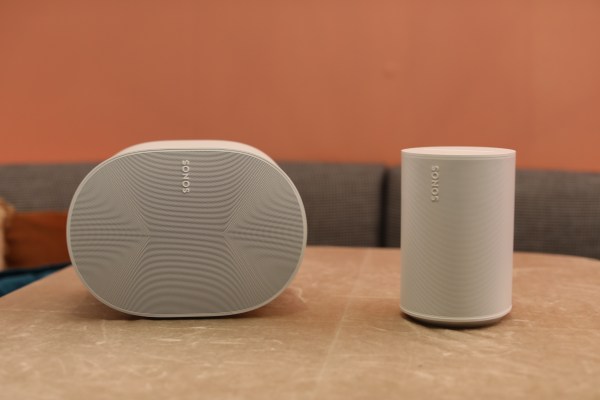The Sonos One wasn’t broken, but that doesn’t mean the company’s is above fixing it. Over two generations and a few variants, the compact speaker has become one of the company’s most popular. Really, it’s been a big win for a firm whose portfolio can give off a whiff of inaccessibility, compared to other connected home speakers.
It sounds great at a $179 price point, and has accordingly become a popular choice for home sound systems, restaurants and retail stores. But six years after the original Sonos One release, the company is effectively calling an end of life to the product to make way for the Era 100. The older model will stick around for a bit, however, because — much like the new HomePods — the new speaker isn’t backward compatible with its predecessor, in terms of making a stereo pair.
Like Apple, Sonos says differences in hardware make the two systems uneven and therefore incompatible, in terms of pairing. The upshot (or, rather, one of the upshots), is that — unlike the Sonos One — the Era 100 does stereo as a standalone. That’s a much welcome breakthrough, obviously.
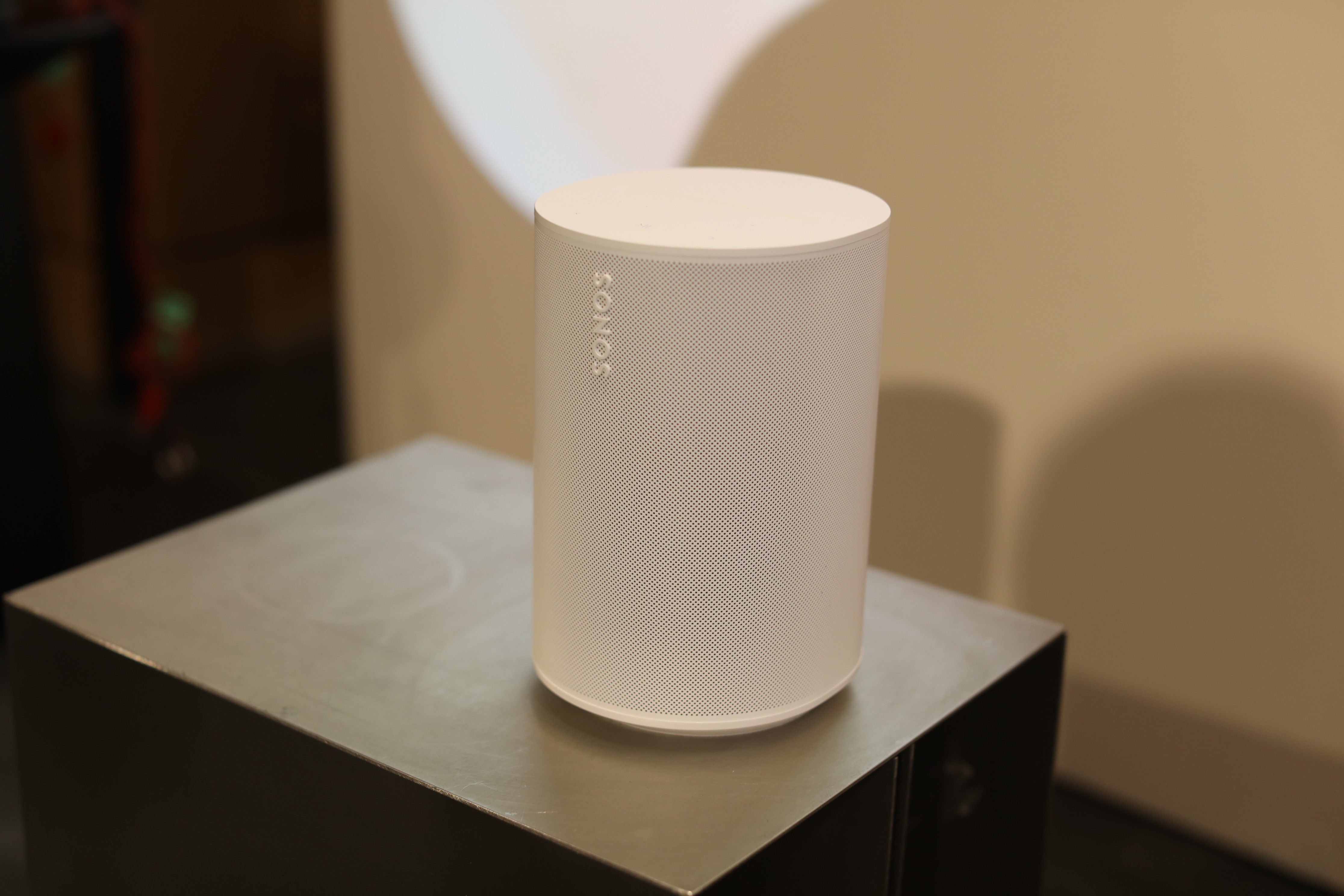
Image Credits: Brian Heater
The new speaker sports a pair of angled tweeters and a larger mid-woofer than its predecessor. The on-board microphones are used for echo canceling, voice control and Trueplay tuning, which measures the layout of a room and distance from a wall to optimize the sound. There’s also a physical switch on the device to shut off power to the mic, so it’s not listening when you don’t want it to be.
The on-board LED light will let you know if the mic is on and offer up connection and mute status. Buttons on top of the system include play/pause, skip, replay, voice assistant mute and the ability to pair or unpair devices. Around the rear is a connector that can be used as an auxiliary line or ethernet port with the right adapter.
At 7.18 x 4.72 x 5.14 inches, the Era 100 is a bit larger than the Sonos One (6.36 x 4.69 x 4.69 ) in all dimensions. At 4.44 pounds, it’s also 0.36 pounds heavier. That’s probably to be expected, given the upgraded internals here. Besides, I’d say that still qualifies the system as “compact.” Compare that to the second-gen HomePod’s 6.6-inch height and 5.60-inch diameter, for example.
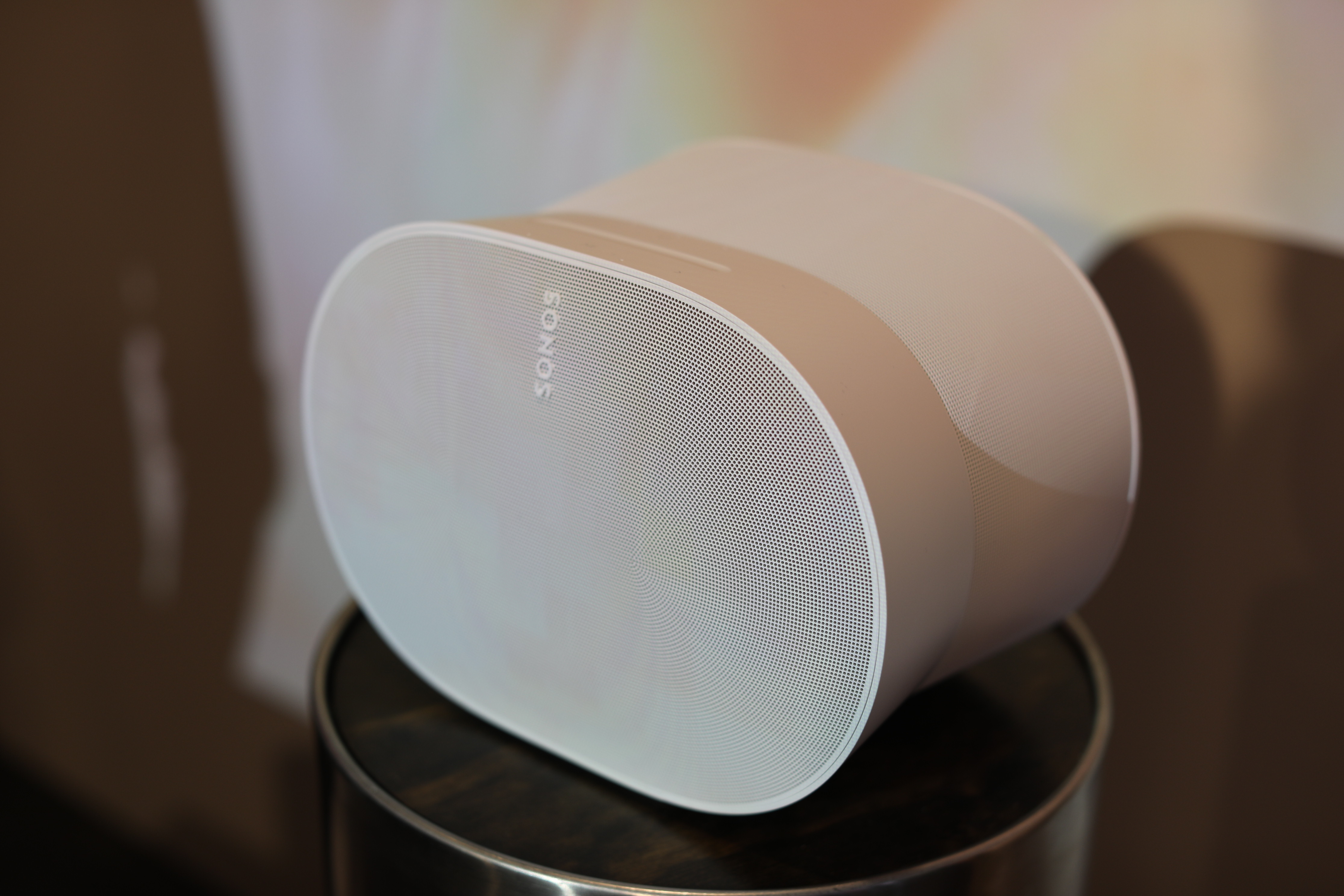
Image Credits: Brian Heater
The Era 100 is joined by the Era 300, Sonos’ first foray into spatial audio. I’ve expressed some skepticism at the feature in the past. You can read an interview I did with Sonos CEO Patrick Spence, where we discuss the tech in a bit more depth, including why the company decided only one of its two new speakers would feature it.
I asked a bit about spatial audio’s branding problem, and whether being associated with headphone tracking is working against the tech. He told me, in part:
As you’ve experienced [the speaker], it’s different than a headphone experience, where you’re moving your head and maybe you’ve got the screen over here. There are some things that I think have delighted people but also freaked out some people, in terms of that experience with headphones. It’s a little bit more gimmicky. Spatial out loud is really about filling the room and making you feel like you’re at the center of it. The right use of spatial is really out loud, versus headphones.
I also think, as recording engineers and artists started to learn what Spatial is all about, some of the early mixes weren’t great, in terms of missing things like vocals or missing a center. People will have tried that and not had a great experience. I would encourage those people to give it another listen.
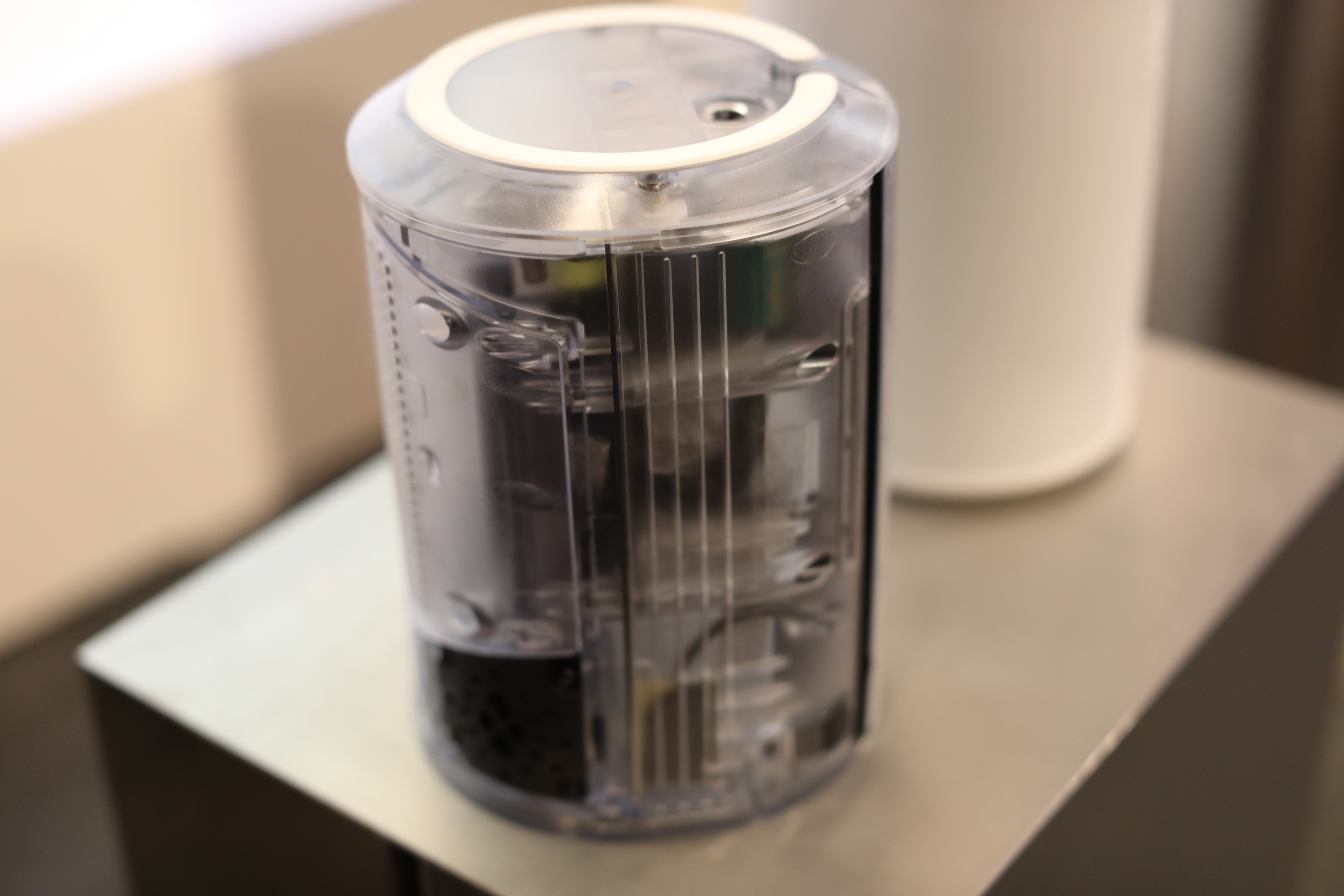
Image Credits: Brian Heater
It’s true that a lot of modern music is being mixed with spatial audio in mind, and a number of streaming services, including Apple and Amazon Music, are embracing it (Spotify can’t really be bothered, it seems). The Era 300 looks different from the 100 precisely due to its embrace of the technology. The speaker sports six amplifiers pointed in different directions to accommodate that sense of sound in three-dimensions.
There are four tweeters (forward, two sides and up) and two woofers. Like the 100, it’s compatible with Wi-Fi 6 (mind, the HomePod is currently stuck on Wi-Fi 4 due to chip limitations), as well as Bluetooth 5. Both speakers are also compatible with AirPlay 2 to stream content from iOS devices running 11.4 or later. The 300 is larger than the 100 at 6.30 x 10..24 x 7.28 inches and more than twice as heavy, weighing in at 9.85 pounds.
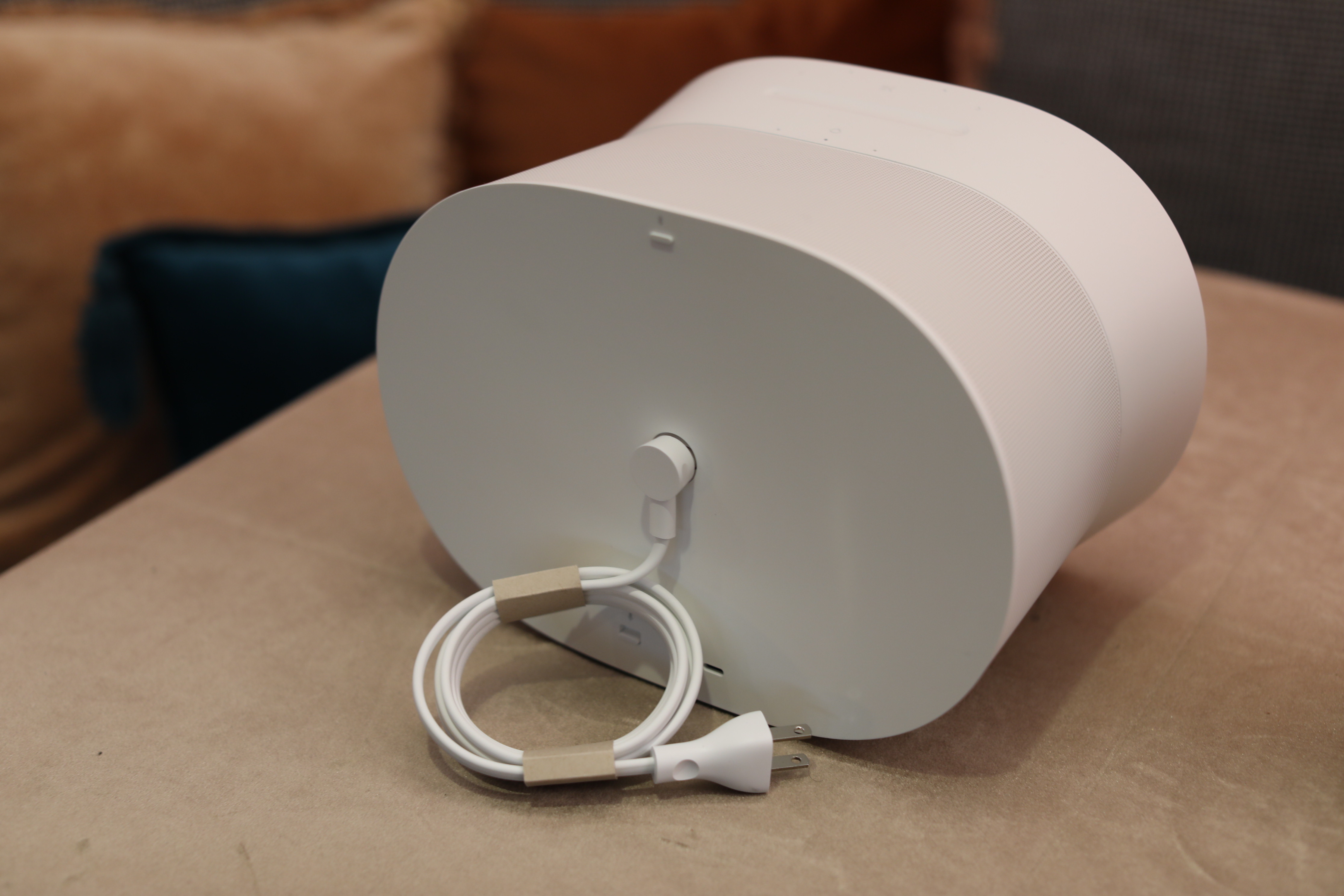
Image Credits: Brian Heater
Both systems have an eye on sustainability, with reduced power consumption and repurposed materials (the packaging is also made up of fully recycled paper). Just in time for a lot of right to repair legislation, they’re both designed to be more repairable, due in large part to a reduction of adhesives.
Spence again:
When we were first bringing out our products 20 years ago, we were like, “how do you build these things so they’ll make the sound you want?” So we had to use things like adhesives. We’ve been able to come up with ways and inventions that allow us to disassemble these products. It comes into our thinking more broadly about what we’re building and how you live up to the law of the land, but even before that, we were already starting to use recycled materials. We were already starting to use things that allow it to be more easily repaired.
The Era 100 and 300 start shipping on March 28, priced at $249 and $449, respectively.
[gallery ids="2490087,2490100,2490099,2490098,2490097,2490096,2490095,2490094,2490093,2490092,2490091,2490089,2490088"]
